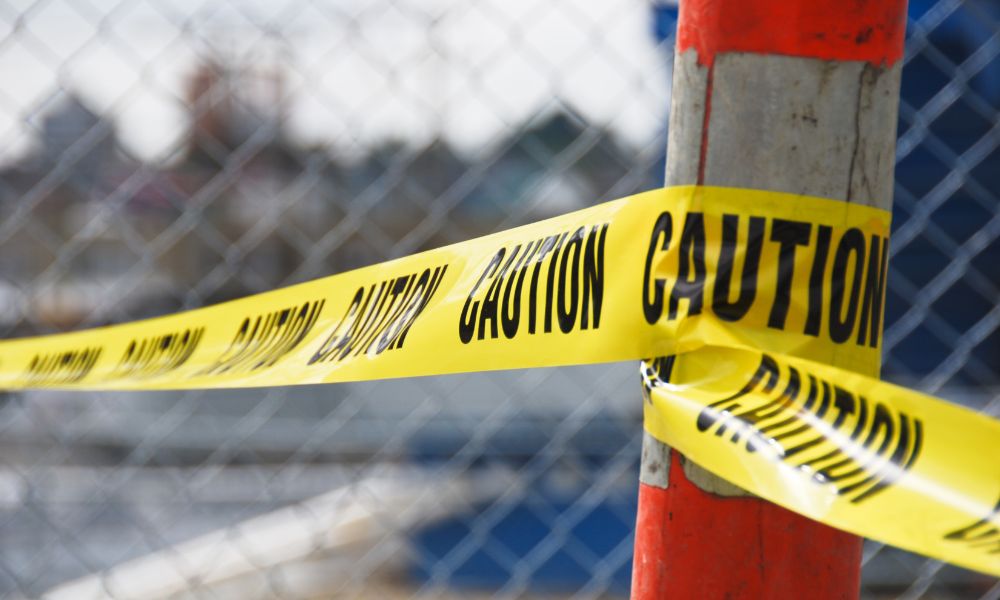Want to hear the full interview? Check out the podcast.
Perhaps now more than ever before, Chaplains and Pastors have the difficult task of addressing the horrific events that are happening in our world. Mass shootings happen on the streets and in our own schools, natural disasters are becoming more intense and shifted their attention to areas where once they were rare or just unheard of (i.e. tornados in the Northeast). There is loss of life to war, drug abuse, suicides—and the list goes on.
Whether you’re in Military or civilian life, chapels, churches or units or small groups, after these atrocities, there often can be grief, confusion, anger, bitterness, and intense fear. Chaplains and pastors who, just one week ago, may have started a sermon series on the topic of forgiveness, creation, or prophecy, now have to handle the immense burden of leading and encouraging people through a crisis.
What do they say?
Rev. Dr. David Reese asked himself the same question. After 30 years in Military ministry as an Army Chaplain, he found he still had no “instruction manual” for Chaplains or pastors dealing with catastrophic events.
In lieu of this frustration, Rev. Reese decided it was time to create one himself to help spiritual leaders guide their congregants through tragedies. Several years of hard work, study, and interviews later, he completed his doctoral dissertation: a framework that addressed the issue of public tragedy and how church leadership should address it.
In this article, learn what public tragedy is and the direction that Rev. Reese offers to those who are facing these issues from the pulpit.
First Things First: What is Mass Casualty, and What’s Public Tragedy?

The Armed Service Ministry’s Rev. Dr. Paul McCullough interviewed Rev. Reese who illustrates exactly what defines a mass casualty versus a public tragedy—how they are different and how they are linked. According to Reese, “A mass casualty is whenever your resources are overwhelmed by the needs… All mass casualties are public tragedies. Not all public tragedies are necessarily mass casualties.”
Using Rev. Reese’s definition, if one person was shot and killed, that would be a public tragedy, but more likely than not, the resources needed to help cope with the situation would not be overwhelmed by the need. However, if 20 people were shot and killed, the public tragedy would also be a mass casualty as the scale of the public tragedy would most likely wipe out the resources available to deal with it.
Furthermore, during the chat, Rev. Reese was asked about how we define public tragedy, and how it was addressed in his framework. He shares:
“The framework works in a public tragedy, [as well as] a mass casualty… If we’re talking in civilian terms, something is a public tragedy when the community has a sense of its significance. The second is the social value. Anytime you have the injury or death of children or the elderly, it carries a tone to it. And that’s not a judgment on the value of these individuals’ lives. It’s just a matter of how do we define this particular tragedy? The last one was the perception of suffering. [For example] We turned off the television one night because my wife made a comment to me. She said, ‘All I see whenever they show the pictures of the children is our granddaughter.’ There’s a perception of suffering that goes along with that. And so, that impacts public tragedy.”
Public tragedy can be a very real hardship that a congregation may be dealing with all at once. According to Rev. Reese, perception of suffering means that even if a church doesn’t have anyone within its walls who was physically affected by a tragedy, congregants may still be experiencing similar anguish as they quickly make similarities between their own loved ones and those who actually experienced the public tragedy.
So, the question remains, how do spiritual leaders address an issue such as this?
Preaching Topics: What’s the Formula?

The framework that Rev. Reese created for preachers dealing with public tragedy stemmed from one initial problem. He shares:
“So by that time [after public tragedy], most pastors, especially those pastors who followed a lectionary had already prepared their sermons. So what were they gonna do? Were they gonna prepare what they preached? Were they gonna include prayers for the families and their community in the pastoral prayer? Were they gonna dump everything that they had prepared and count on the Spirit of God to lead them into something that could provide healing and comfort and strength? So that’s what I wanted to look into—what do you say? Especially the first Sunday after the tragedy.”
Because these profound questions really had no answers, Rev. Reese realized that these preachers needed step-by-step direction to handle public tragedy. Particularly, they should be provided with much-needed topics for the first Sunday and a few Sundays after the tragedy.
As a solution to this need for direction, Rev. Reese outlines three focus topics: reframing, reminding, and resisting.
Reframing:
“I recorded their [the pastors’] sermons…and what I expected to find was that they were gonna start talking about pastoral care and using pastoral care language…they didn’t. What they did was use language that their people were comfortable with…and so, physically and concretely, it’s like, ‘Let’s reframe this.’ And we’re gonna reframe it in terms of Scripture that is familiar to us. So it’s this; it’s the theme. So if I wanna talk about healing in this case, I put it in a context that my people are familiar with, and I’m gonna use scriptural language to do that because we begin with scripture.
Reminding:
“The second is reminding…Yes, we are reminding—reminding people of God’s promises. And we’re reminding people of God’s sovereignty because in the midst of all this chaos that has been created by this disaster, we need to know who’s in charge—and it’s not the disaster. So, that’s where the reminding comes from.”
Resisting:
“And so… that’s resistance. Resistance in spite of anything that the world may throw at us; in spite of any disaster that may come our way, even if we don’t see God in the middle of all that [tragedy], we proclaim that God is present and God will never abandon us.”
Rev. Reese uses these three elements to offer Chaplains, pastors, etc. some great tools to expound upon in their sermons. We use the Word of God to offer comfort, we remind others of God’s promises; his goodness and faithfulness, and we stand up to the world and preach that God is still good.
Need Inspiration? Check Out These Resources

For Chaplains and pastors looking for some further inspiration in their sermons, Rev. Reese shares his stance on whether stories, imagery, and metaphors would still work in his framework of Scripture and hope. He explains:
“Yeah, I think [they] can, and I think it’s important that you do [include them]. It’s in our nature to be attracted to stories…you can sit and listen to your grandpa tell a story all day long. Why can’t you do that with your preacher? If the preacher can give a visual, if they can tell a story, and if that story is Scriptural—if it’s in alignment with the Scriptures, if it’s godly, if it’s spirit-inspired—especially then, that’s gonna break through the fog of grief and pain.”
Stories of hope, stories of perseverance, and faithfulness—these make for inspiring tools within a sermon to see your congregation through a public tragedy.
ASM offers resources for dealing with many tough subjects. In the God Understands program, topics from sadness and grief, to fear of death are covered. Each section features stories of Military warriors who have been through many tough challenges and have pulled through.
Final Thoughts on Preaching After Public Tragedy
Chaplains and pastors rarely get the proper training needed to handle the pulpit after a public tragedy. After witnessing many tragedies himself, Rev. Reese realized his calling was to research and create his framework to help them answer the big question: “What are we supposed to say?”
You can also read the full article on Rev. Reese’s interview for insight on his work and experiences here.
With the hope found in the Word of God and the help of faithful men and women who desire to lift up others, we can prevail against that which desires to tear us down.
“For whatever was written in former days was written for our instruction, that through endurance and through the encouragement of the Scriptures, we might have hope.” -Romans 15:4 – (ESV)





